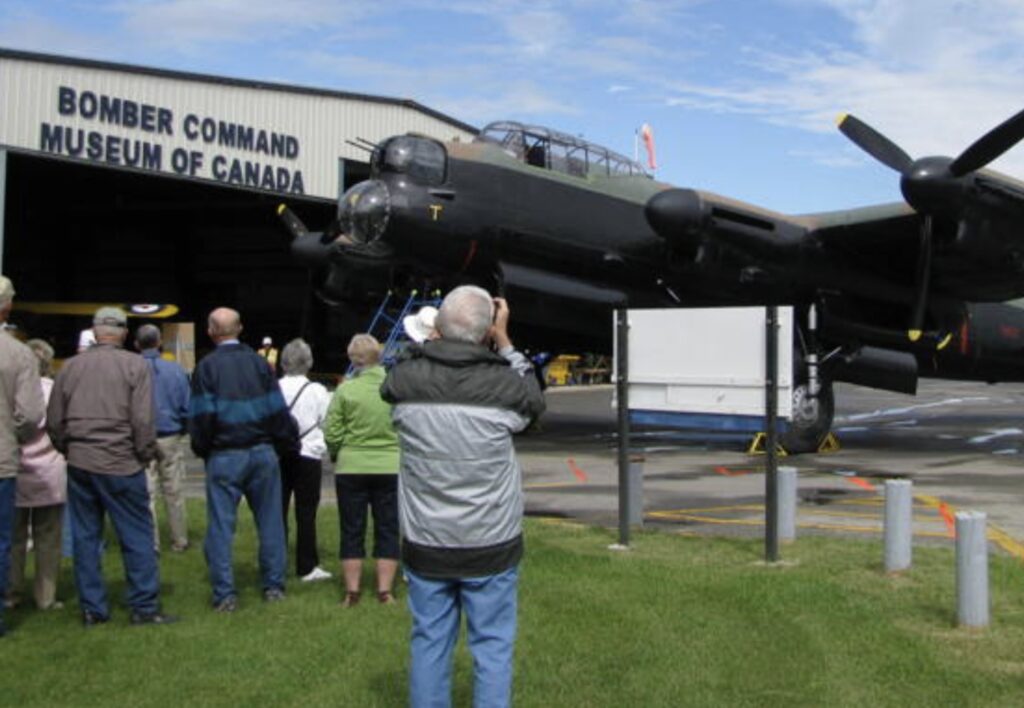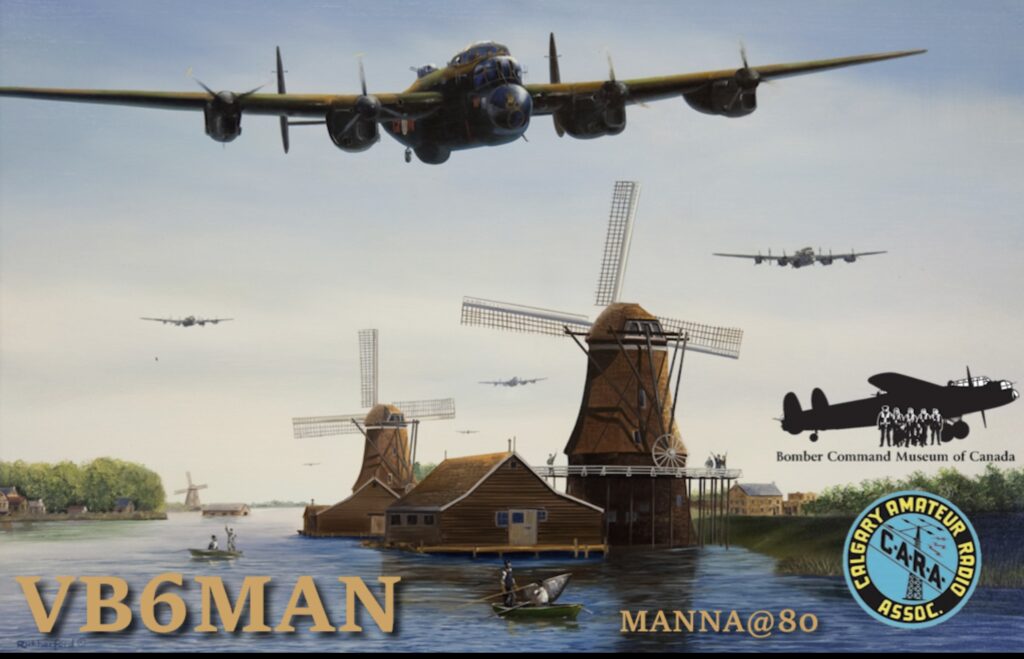
The Bomber Command Museum of Canada, formerly the Nanton Lancaster society, is in Nanton Alberta. The museum opened in 1986 and was founded to protect and restore Avro Lancaster FM159, one of 17 remaining Lancasters in the world, two of which are flying and two are taxi only the Nanton Lancaster being one of those. It has since grown to include a large collection of aircraft, many of which were used during WW2.
Ken Hill VE6AGD will run his operation Manna station with the help of local amateurs at the Bomber Command Museum of Canada. Many of them will come from the Calgary Amateur Radio Association. They will use the Callsign VB6MAN. They will be providing activities for visitors as well as making contacts on the radio to commemorate operation Manna. Their QSL card below features a picture of a Lancaster dropping food over the Netherlands that Lancaster was piloted by Joe English who was a founding director of the Bomber Command Museum of Canada. They will operate on 10, 15, 20m with their 3 element Yagi on top of a 35ft tower, they will also use a 130ft EFHW plus run DMR.
The Nanton Lancaster Society was formed in 1985 with the mission of preserving the town’s Avro Lancaster, which had been on outdoor display since 1960. The following year, the society officially began displaying the aircraft as a museum. In 1991 the NLS completed a building to house the plane, and throughout the 1990s the museum acquired a large collection of aircraft to complement the Lancaster. Following the opening of the original building, the museum has expanded in 1998, 2002, and 2007.[2] The museum includes a library, archive, and restoration shop. It is presently working to add second hangar for its collection
Since 1986, the museum’s Lancaster has undergone a full restoration, and all four engines are operational, and the aircraft can taxi under its own power, one of only 4 similar Lancasters in the world. The Society elected to restore the aircraft using the livery of Lancaster FM-159 (F2-T) “T for Tommy,”
In 2005 the museum dedicated its Bomber Command Memorial, and in 2010 changed its name to the Bomber Command Museum of Canada. Now a nationally recognized museum working with other aviation museums in Alberta and Canada and hosting members of the Royal Canadian Air Force in recognizing the contribution of Canadian airmen and women during and after the second world war. In addition to its airplanes and vehicles, the museum has an extensive collection of engines, a significant collection of nose art pieces and documentation, and other related objects.
Bomber Command Museum of Canada Museum Walk Through
